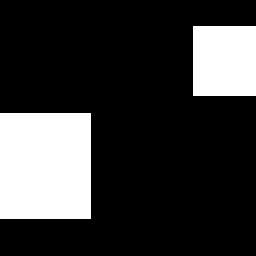New algorithm for nonlinear vector-based upconversion with center weighted medians
- authored by
- Holger Blume
- Abstract
One important task in the field of digital video signal processing is the conversion of one standard into another with different field and scan rates. Therefore a new vector-based nonlinear upconversion algorithm has been developed that applies nonlinear center weighted median filters (CWM). Assuming a two channel model of the human visual system with different spatio-temporal characteristics, there are contrary demands for the CWM filters. One can meet these demands by a vertical band separation and an application of so-called temporally and spatially dominated CWMs. By this means, interpolation errors of the separated channels can be compensated by an adequate splitting of the spectrum. Therefore a very robust vector error tolerant upconversion method can be achieved, which significantly improves the interpolation quality. By an appropriate choice of the CWM filter root structures, main picture elements are interpolated correctly even if faulty vector fields occur. To demonstrate the correctness of the deduced interpolation scheme, picture content is classified. These classes are distinguished by correct or incorrect vector assignment and correlated or noncorrelated picture content. The mode of operation of the new algorithm is portrayed for each class. Whereas the mode of operation for correlated picture content can be shown by object models, this is shown for noncorrelated picture content by the probability distribution function of the applied CWM filters. The new algorithm has been verified by objective evaluation methods [peak signal to noise ratio (PSNR), and subjective mean square error (SMSE) measurements] and by a comprehensive subjective test series.
- External Organisation(s)
-
TU Dortmund University
- Type
- Article
- Journal
- Journal of electronic imaging
- Volume
- 6
- Pages
- 368-378
- No. of pages
- 11
- ISSN
- 1017-9909
- Publication date
- 01.07.1997
- Publication status
- Published
- Peer reviewed
- Yes
- ASJC Scopus subject areas
- Atomic and Molecular Physics, and Optics, Computer Science Applications, Electrical and Electronic Engineering
- Electronic version(s)
-
https://doi.org/10.1117/12.273081 (Access:
Closed)


